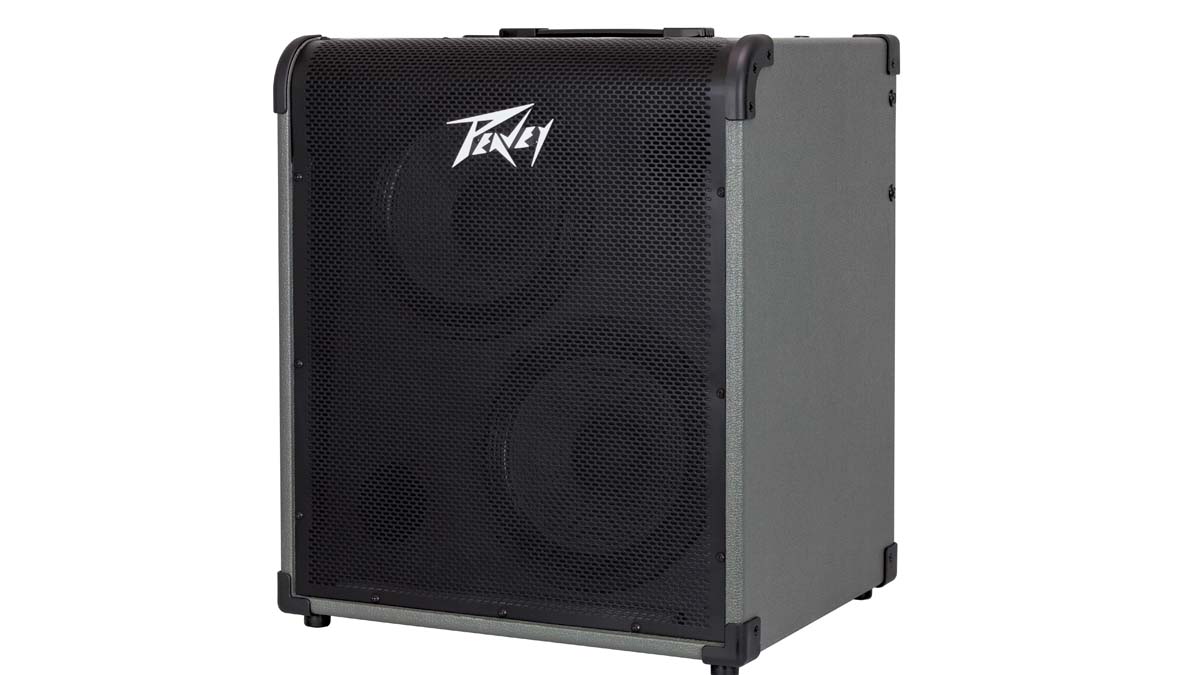Guitar World Verdict
Anyone in the market for a mid-priced, giggable bass combo would be well-advised to check out the MAX300, thanks to its tonal tweakability and versatile set of features.
Pros
- +
Plenty of tone-shaping options.
- +
Excellent build quality.
- +
Good value.
Cons
- -
None.
You can trust Guitar World
Times change, but the humble bass combo is still a worthy piece of gear for many players, fulfilling our most important requirements – portability, affordability, power, and quality of sound.
Peavey combos have been a reliable workhorse for our community for decades; in fact, many bassists would tell you that they’ve been the rule by which other combos were measured.
With their new MAX 300 model, has Peavey come up with a combo that continues this enviable legacy?
Build Quality
The unit is constructed from high-quality lightweight timber, the advantage of which is that it keeps the weight down, although it will also affect the quality of the low end.
Covered in rugged grey vinyl with hard rounded plastic corners for protection, and a curved metal grille to protect the speaker, the combo certainly looks up to the job.
A heavy-duty carry-handle is situated on the upper face and is suitably positioned, considering the height and width of the combo.
Covered in rugged grey vinyl with hard rounded plastic corners for protection, and a curved metal grille to protect the speaker, the combo certainly looks up to the job
The drivers are angled upwards to provide clearer delivery, while porting has also been used to tune the unit accordingly. The configuration of two 10” drivers should help to maximize the bottom-end delivery while retaining a fair degree of midrange punch, while the tweeter should deliver a clear top-range response.
All the latest guitar news, interviews, lessons, reviews, deals and more, direct to your inbox!
The control panel is inset into the top-edge of the unit, and the controls themselves are fairly low-profile, so damaging them is unlikely.

The simple control set comprises inputs for active and passive basses, Gain, a three-band EQ and Master Volume, after which there are selector buttons for Overdrive, Contour, Mid-Shift, Bright, the exotic-sounding Kosmos-C, and a selector button to access the tuner and mute.
The rear panel sports a Tweeter Defeat switch, FX loop, XLR DI, Aux-In input and Headphones output, a single Speakon output for an additional cabinet, and a footswitch socket, although a footswitch is not included.
Sounds
Armed with several passive and active basses, with a five-string among them for good measure, we fired the unit up. With the EQ set flat, we slowly increased the Gain and Master Volume: this produces a very impressive performance, with the 10” speakers producing a tight response with a surprisingly full bass tone.
Bringing the EQ into play opens up a lot of possibilities, giving the passive basses some color and extra tonal options. The EQ is well voiced with 15dB of boost across the board at 50Hz and 6kHz for bass and treble. Our initial impressions were positive, as the combo projected very well with an impressively hefty punch in the midrange.

The Mid-Shift option offers 250Hz or 600hz as a center point for the mids; the Bright option offers a 10dB boost at 1kHz; and the Overdrive effect is simple to operate, using the Gain and Volume controls.
It makes good use of tube emulation circuitry and combines well with this speaker format, keeping the signal tight and warm without becoming too flappy.
The Kosmos-C makes the unit sound bigger and larger than it is without pushing the speakers to their limit
A major selling point for this range is the inclusion of the Kosmos-C option. This is designed to enhance the low end by producing harmonics in the lower range for extra boost; it makes the unit sound bigger and larger than it is without pushing the speakers to their limit.
Although this works very effectively, adding power and bottom-end spread across the lower frequencies, the output of your bass will have an impact on its performance. Naturally, active and five-string basses fare slightly better than passive instruments.
Conclusion
This is a great all-in-one package at a very reasonable price, and I can’t see anyone being disappointed by a purchase. Peavey’s legacy is secure, especially at this price point, so do investigate if you’re in the market for a mid-priced combo.
Specs
- Price: $499 / £529
- Made In: China
- Power: 300 watts RMS
- Features: Gain, bass, middle, treble, master, chromatic tuner, overdrive, contour, mid-shift, bright, Kosmos-C, tune/mute, tweeter defeat
- Speakers: 2 x 10” speakers and tweeter
- Dimensions: 580mm (H) x 492mm (W) x 412mm (D) / 22.8” (H) x 19.4” (W) x 16.2” (D)
- Connections: ¼” jack inputs (active and passive), ¼” jack Send/Return FX loop, balanced XLR DI output with ground lift switch, 3.5mm auxiliary input, 3.5mm headphone output, ¼” jack footswitch, Speakon output
- Weight: 21 kg / 46.4 lbs
- Contact: Peavey


